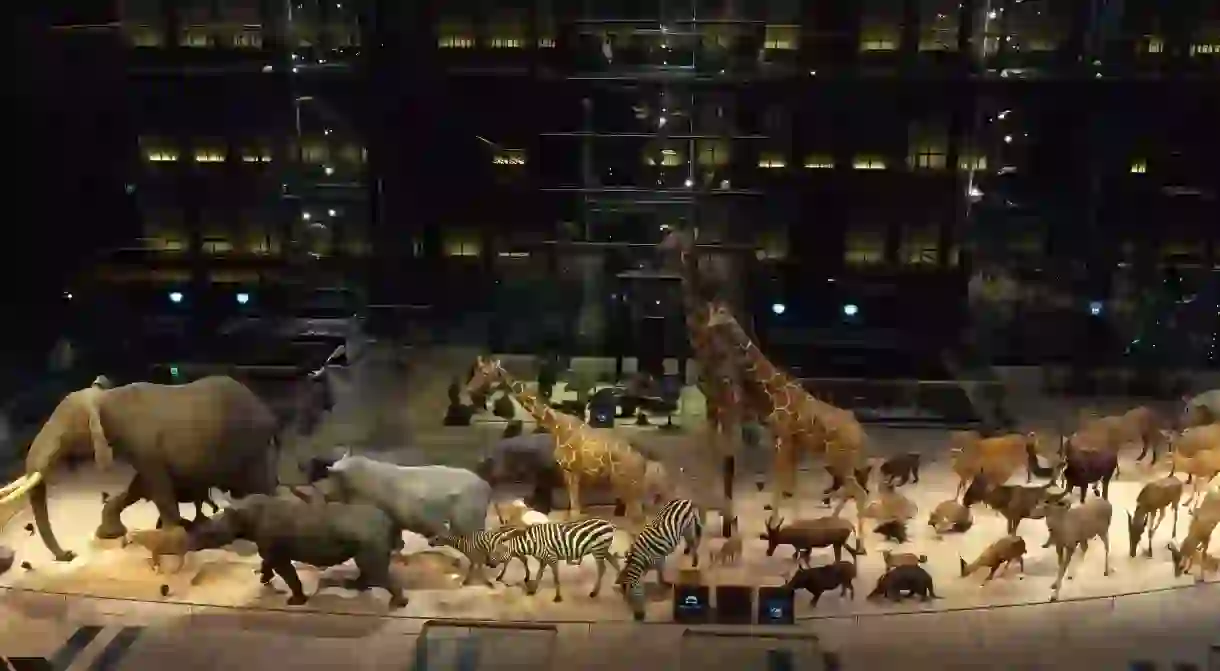Face Nature's Fascinating History at Paris' Curious Museum

The National Museum of Natural History (Muséum national d’Histoire naturelle) is not the most famous museum in Paris, yet it hides so many treasures within its walls. Discover its secrets in this exclusive interview with the collection’s director.
Gildas Illien, deputy director of the collections at The National Museum of Natural History in Paris, gives us an exclusive glimpse behind the scenes of this fascinating museum.
What is special about your museum?
It is one which covers all aspects of presenting nature in its diversity, living or dead, be it vegetal, animal, human, or mineral. Most institutions abroad only cover one or two pieces of our museum and we find them a bit challenging to put together. We’re a united biodiversity puzzle, we provide a big picture.

If you take all the museum sites as a single institution, you realize it was really aimed to be a comprehensive and holistic structure dedicated to research, education, and leisure. The Jardin des Plantes has galleries of zoology, botany, palaeontology, and mineralogy; anthropology and prehistory are presented at the Musée de l’Homme; living animals are displayed at the Jardin des Plantes and at the Zoo in Vincennes; and living plants bloom all year long all over the Jardin des Plantes and the arboretum near Versailles.
Smaller locations in the rest of the country, including a Marinarium in Brittany and rare gardens in the South of France, make the picture even bigger.
Why should people visit?
People should visit us because we keep in rather good shape one of the oldest and largest natural history museums in the world: some of our collections (70 million specimens, two million publications, archival material, and pieces of art) date back to the 17th century.
Our holdings as well as our exhibitions tell the history of science and the discovery of nature. The Great Gallery of Evolution, renovated in the late 90s, is admittedly a masterpiece of exhibiting natural history collections, with a special attention to extinct species which efficiently brings public awareness to the fragility of our world.

How does your museum help us understand nature and the world we live in better?
The Museum is a research institution employing over 600 scientists devoted to exploring and describing nature, identifying new species, and understanding the relationships between them within the depth of time, that is the study of evolution, and with one another (including mankind), which is the study of ecosystems.

Such understanding is crucial for creating a sustainable environment and running informed policies in a world that is irremediably affected by global change. Collections are the only tangible objects documenting the state of past biodiversity; therefore it is a unique way to address global change and other major trends of public interest at national, regional, or international level. Permanent and temporary exhibitions, conferences, and public access to many of our stacks and programs contribute bringing public awareness in these areas.
What are the “unexpected treasures” you say that visitors can find?
In the Great Gallery of Evolution, there are historical specimens, such as the rhinoceros who once belonged to King Louis XV and used to live in Versailles before the Revolution, along with many extinct species. The “flock” in the gallery of Anatomy and the Cynthiacetus (which gave rise to whales) in the Palaeontology gallery are other remarkable specimens of great public interest.

In the jardin des Plantes, regular visitors know the secret paths and gardens, and the famous and oldest trees, some of which were planted prior the French Revolution. Some of our trees are true stars, such as the great cherry tree where tourists love to take selfies every year at springtime when it’s blooming and seems to be made of snow.

Our library is also famous for its exceptional holdings, notably the Velum collection initiated by Gaston d’Orléans, brother of King Louis XIII, made of 7,000 handmade master watercolors depicting vegetal and animal species with an encyclopedic and scientific purpose. The museum itself is an expected treasure, somewhat hidden behind walls in the city center and by the river. The moment you get in, you know you have entered a different time zone.
Do you have any strange or bizarre exhibits?
Of course! Each of our exhibits have their share of strange and bizarre in light of current human standards. Some of the things we display may seem a bit monstrous as they depict rare species or forms of development observed in nature. But it’s all real, just reminding the public that nature and life can be strange and have always been so. We’re also here to encourage the audience to overcome their prejudices and commonplaces.
Location and Phone Number:
57 Rue Cuvier, 75005 Paris, +01 40 79 56 01













